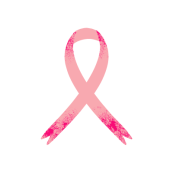Breast Cancer Awareness Month is a campaign to raise awareness and fundraise for treatments against breast cancer each October.
According to the National Breast Cancer Foundation, one in eight women in the U.S. will develop breast cancer in her lifetime. It is also the second most common cancer in women (behind skin cancer) in the United States. The World Health Organization (WHO) has declared it the most common form of cancer in women worldwide with 2.1 million women affected each year.
Even though it occurs almost 100 times more often in women, the National Breast Cancer Foundation estimates around 520 deaths for males in 2020 due to breast cancer.

This form of cancer can be genetic or environmental. There are many products/behaviors Americans perceive as risky when it comes to being diagnosed, but most are really just myths. If a family member has been diagnosed with breast cancer, then you have a higher risk of a diagnosis. Your age is another defining factor as two out of three women with invasive breast cancer are diagnosed after the age of 55. An inactive lifestyle, poor diet or obesity can increase your risk, along with a consistently high intake of alcohol. Screening mammograms are administered annually to women for early detection. These x-rays closely examine breast tissue for lumps or any other abnormalities.
One student at Cabrini knows all too well how breast cancer can affect an entire family.
“I have younger brothers, so we were going through the same hurt at the same time,” Hawirk Munoz, junior international business and political science major, said.
Munoz was around 9 years old when her mom was diagnosed with breast cancer at the age of 38. She underwent treatment for for 18 months until she was declared cancer-free.

“We had to keep positive for her to continue battling and everything. My dad, most of the time he had to like drive her and bring her back, because chemo and radiation was really aggressive. She was diagnosed with stage IV breast cancer, so it was very aggressive.”
Munoz now has to be extra cautious about her health. She has to check herself for abnormalities more frequently and get screenings at an earlier age due to the genetic nature of the cancer. She says it is very difficult to have that added stress in her life. However, the scariest part of her mother’s treatment was the prescription medications she had to take. They had severe side effects. Her mother struggled at work as a result, but tried to hide it from Munoz and her siblings.
“She was like superwoman to us. My mom had a good support system back at home. She knew she wasn’t alone in this. It’s just that most people have to understand that it’s just not a cough or anything, but you know inside it’s a battlefield, and you willingly have to make your body beats it.”
She feels that her mother’s age might have been an advantage, because her body had enough strength to undergo the treatment.
Even though a cure has yet to be discovered, chemotherapy has proven to be effective just as it was for Munoz’s mother. Chemotherapy uses a combination of drugs to destroy, or slow down cancer cells. Radiation therapy uses high-energy rays to kill the cells located in the specific area of the body that is affected. Radiation can also destroy mutated cells. Clinical trials continue to discover ways to improve these treatments as well.
Sports teams, organizations, universities and various other institutions are dedicated to bringing awareness during the month of October. The National Football League (NFL) has teamed up with the American Cancer Society for their Crucial Catch campaign since 2009 and have helped raise around $22 million to improve treatment for all forms of cancer. The American Cancer Society is dedicated to helping Americans with all forms of cancer year round. Go to their website to donate now during Breast Cancer Awareness Month.


